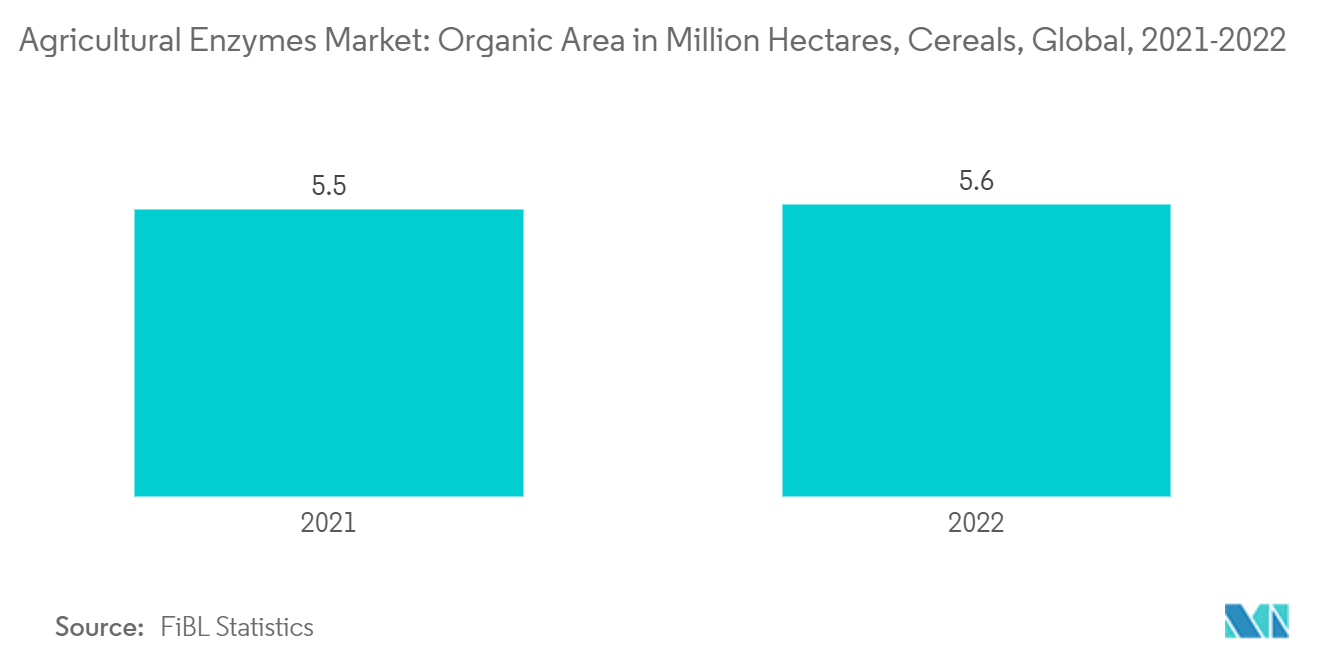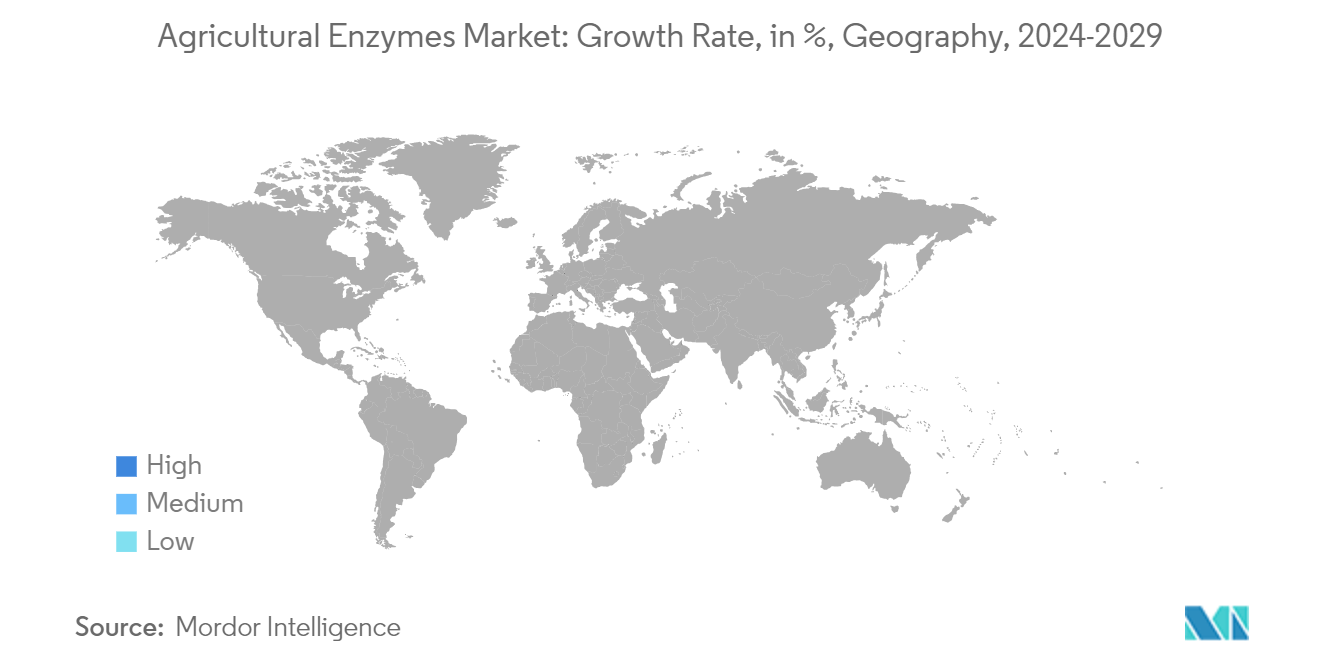Market Trends of Agricultural Enzymes Industry
Cereals and Grains Holds Significant Shares by Crop Type
The adoption of agricultural enzymes is on the rise, particularly in the cultivation of cereals and grains. Environmental concerns about the overuse of chemicals in agriculture have highlighted the issue of chemical residues in crops. For example, FAO data from 2022 revealed that Antigua and Barbuda led in agricultural pesticide consumption, using over 36.59 kilograms per hectare of cropland, with Qatar closely following at 35.11 kilograms per hectare. This has driven a shift towards safer alternatives like enzymes. Additionally, the use of enzymes in cereal production has shown benefits such as improved moisture retention, increased root biomass, and faster organic matter decomposition, further encouraging their global adoption in cereal and grain cultivation.
Moreover, as consumers become more health-conscious, there is a noticeable shift towards organic foods to avoid the negative health effects associated with chemical preservatives. This trend has expanded the scope of organic farming. For instance, FibL data indicates that the organic area for cereals grew from 5.5 million hectares in 2021 to 5.6 million hectares in 2022. These developments underscore the increasing use of enzymes in organic farming. With the organic food industry growing and a strong emphasis on food safety, the adoption of agricultural enzymes in cereal and grain crops is set to increase, signaling a positive trend for the segment in the coming years.

North America Dominates the Market
North America leads the globe in the consumption of agricultural enzymes, with the United States taking the forefront. The U.S. agriculture sector swiftly adopts modern technologies. Factors such as rising costs of chemical inputs, their harmful impacts on soil and the environment, and an increased awareness of balanced plant nutrition are driving the demand for agricultural enzymes in the U.S. Additionally, strong government initiatives in the region further fuel this market's expansion. For instance, in August 2022, the U.S. Department of Agriculture (USDA) launched the USD 300 million Organic Transition Initiative, aiming to nurture the next generation of organic producers and strengthen organic supply chains. Such measures are likely to boost the adoption of bio-based inputs, including agricultural enzymes, thus broadening the market in North America.
Canada is witnessing a clear pivot towards bio-based agriculture, focusing on improved crop productivity and quality from the early growth stages. This rising inclination towards organic products, supported by government backing, is encouraging industry players to enhance their services in the region. For example, in March 2024, Novonesis expanded its partnership with FMC, appointing FMC as the exclusive distributor for select Novonesis agricultural bio-solutions in Canada, effective from the 2025 growing season. In Mexico, a growing appetite for organic and natural foods, coupled with a trend towards sustainable farming, has increased the demand for naturally sourced agricultural inputs. According to the 2023 Statistical Yearbook of Agricultural Production, over 54 thousand hectares in Mexico were dedicated to organic crops, with approximately 52 thousand hectares successfully harvested. These trends are poised to further drive the market's growth in the coming years. Thus, with supportive government measures and a rising emphasis on organic farming, the agricultural enzymes market is set to flourish during the forecast period.


